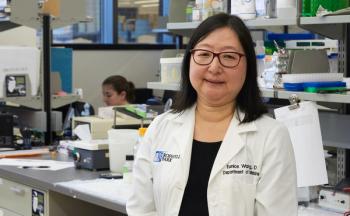
Oncology Care Model: Multidisciplinary Care
Transcript:
Bruce Feinberg, DO: Now, Rich, your program is an OCM [Oncology Care Model] program.
Richard D. Carvajal, MD: We are.
Bruce Feinberg, DO: Are you part of the leadership committee for the OCM at your institution?
Richard D. Carvajal, MD: No, no, I’m not directly involved.
Bruce Feinberg, DO: Well, it’s a good thing for me because what I want to ask you questions about relates specifically to that. I think 1 of the things that’s been interesting in a lot of programming in the past has been: Are the doctors engaged, or is it a back-office function? If you go to prior programs, it became more of a back-office function. You hire lower-level employees who go through the EMR [electronic medical record], who make sure that all the i’s are dotted, t’s are crossed, and boxes are checked and who do the submissions. But if you’re really going to change the face of care, and if we’re going to be transforming to value-based care, then it really has to come down to the individual provider. Does that happen at your institution?
Richard D. Carvajal, MD: Yeah, it does, although it’s been a lot of work. I suspect this is similar to a lot of organizations in that when we launched, it was a major outreach campaign, a major education campaign to let everyone know about the program, which a lot of folks just did not know about. Two, make the steps for implementation relatively pain-free for the practitioners. That’s the only way you’re going to get buy-in. Currently, we do have a fairly large back-office operation in terms of helping us identify the patient and in terms of looking at the metrics and so forth. But this definitely moves downstream and directly affects the way the practices function. I can say, kind of simplistically, the fact that now we do have to document pain scores, we’re all doing that now. It’s not like we were not doing this previously. Pain is a major facet of what we do in terms of patient care, but now we’re documenting it. The downstream effects, in part, have been more integration with palliative care. I do think that’s leading to better outcomes.
In fact, the initiative has kind of had other effects in programs where, for instance, we’ve recently launched an urgent care for our cancer patients. That’s something that’s absolutely critical. We can’t have our patients going through the larger emergency department [ED], and I think that’s good for care. In fact, I just looked at numbers recently. Since we launched in March, of the 60 patients or so who have been seen in the urgent care, less than 5% were admitted. When we look at our [ED] population, if we send our patients to the [ED], 50% of them are admitted. That by itself is an amazing number, and so I have to imagine that’s going to lead to a financial savings. But more importantly, in terms of patient care, it’s an incredible number.
Bruce Feinberg, DO: Susan, your background is in social work. So much of the first 2 years and the requirements that were taken from the IOM [Institute of Medicine] for the OCM were really about patient navigation. It seems to me that in a lot of practices, that functionality was looking for who the FTEs [full-time employees] were who were going to manage. It may not necessarily have to be a physician function. It may not be a cost-effective solution to make it a physician function. Did the social work community expand within oncology, even within private practice and not just in the institutional setting, in order to start to meet those demands?
Susan Ash-Lee, MSW, LCSW: Yeah, absolutely. Particularly in the community oncology arena, we saw an increase in those practices employing full-time licensed clinical social workers because you needed those folks to do some of those core components—the depression and anxiety, the advanced care planning. You needed to be involved with treatment decision making and shared decision making to really help the patients and family really understand what had been said in those visits, so that it became information that would move toward good decision making and positive outcomes. We needed to coach them on calling the clinic before they arrived at the emergency [department]. That education was multifactorial. It took the whole system to deploy.
You had spoken just a few minutes ago. Is this a back-end or a front-end endeavor? I think if you didn’t do both of those things, you didn’t transform your practice in OCM. You certainly needed the infrastructure of folks coordinating and elevating those patients to the physician, but the physician needed a full team. What we’re learning in the OCM is the oncologists couldn’t do it alone. There’s no way you can manage all your OCM patients plus all your commercial patients and do anything meaningful with that. And so those practices that are doing the best began to look at patient care from really that IOM approach, or that whole patient approach.
Newsletter
Stay ahead of policy, cost, and value—subscribe to AJMC for expert insights at the intersection of clinical care and health economics.








